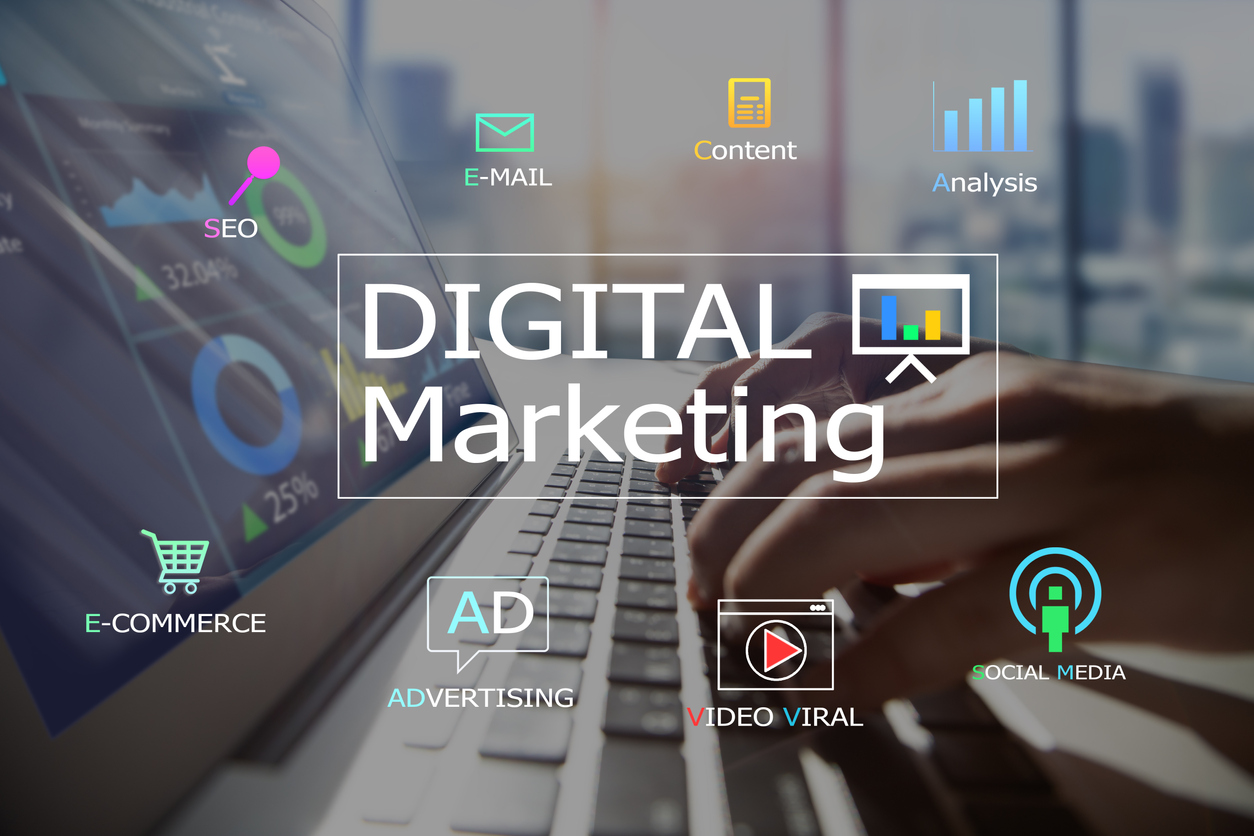Digital Marketing refers to the application of apps, websites mobile devices websites, social networking sites as well as other methods of digital technology to advertise and sell items and services.
What Is Digital Marketing, Types, and Examples?
Digital marketing follows several of the same principles that traditional marketing does and is often regarded as a better method for businesses to engage with consumers and better understand their habits. Businesses often mix traditional and digital methods of marketing to develop their strategies. However, digital marketing has its own set of issues. Digital marketing became fashionable with the widespread adoption online in the early 1990s.
How Digital Marketing Works?
Marketing covers a variety of strategies and methods businesses can employ to market their products and offerings to prospective customers to boost the market shares they hold. To succeed, it needs an amalgamation of marketing and sales-smart. Occupational marketers can perform the responsibilities either within private companies or externally with marketing firms that can offer a wide range of customers.
The companies of the past focused on marketing via television, print, and radio since it was the only feature available. Even though those options are still in use. However, the internet offered companies another avenue to connect with consumers and led to digital marketing.
The new technology and new trends forced companies to rethink their marketing strategies and reconsider their budgets. Email was a well-known marketing tool in the beginning years of online marketing. The focus then shifted towards search engines such as Netscape which enabled businesses to label and search for products to be noticed. The rise of social media platforms such as Facebook allowed businesses to monitor user data and deliver their messages to extremely specific groups of people.
Types of Digital Marketing Channels:
Digital marketing channels have changed since the 1990s, and continue to develop. These are the eight most well-known channels currently used.
Website Marketing:
Businesses often make use of their websites as the mainstay for their online marketing. The most successful websites present the brand’s items and offerings concisely and memorably. A website of today must be responsive, mobile-friendly, and easy to navigate.
Pay-Per-Click Advertising:
Pay-per-click (PPC) advertising enables businesses to reach their audience on news websites and other sites and platforms via paid advertisements. Marketers can launch PPC ads through Google, Bing, LinkedIn, X (formerly Twitter), Pinterest, and Facebook and display their ads to users who are searching for terms that relate to their product or service.
These campaigns can be segmented by their demographics (such as gender, age, etc.) or their unique desires or geography. The most frequently used tools for PPC are Google Ads and Facebook Ads.
Content Marketing:
The purpose of material marketing is to connect with potential customers by making use of written, visual, or audio material that they are interested in. This material is typically posted on a website and then promoted via email marketing, social media search engine optimization, or even through pay-per-click marketing. Subject matter marketing tries to be more discreet than advertising in addition, the service or item that the promoter is trying to sell could be prominently highlighted.
Email Marketing:
Email marketing remains among the top efficient digital marketing channels, even though most people think of it as spam and treat these emails as such. Many digital marketers make use of their other marketing channels to gather names to populate their list of email addresses. In the process, of using marketing via email, they attempt to convert potential leads to customers.
Social Media Marketing:
The most important purposes of a social media-based marketing campaign are to create brand recognition and build trust. If you get more into marketing via social media you may use it to get leads and as an indirect marketing or sales channel. Tweets and posts promoted by a company are two instances of marketing via social media.
Affiliate Marketing:
Affiliate marketing is among the oldest methods of marketing, but the modern market has brought it a fresh life. Through affiliate marketing, organizations as well as individual “influencers” promote another company’s products and earn a commission each time a purchase is made or a new prospect is added to their database. Many popular corporations, such as Amazon and others, have Affiliate programs that pay thousands of dollars in commissions to associates who benefit from selling their products.
Video Marketing:
Many Internet users use sites such as YouTube before making a purchasing choice, to understand how to perform something, look up a review, or just unwind. Marketers can make use of one of a variety of video marketing tools, like Facebook Videos, Instagram, and TikTok for an effective video marketing campaign. Businesses can achieve the greatest satisfaction from videos when they integrate them in conjunction with SEO, material marketing, as well as broader advertising campaigns on social networks.
Text Messaging:
Text messages are also used by companies (formally called SMS also known as short messaging service) to inform customers about their newest products and offers. Non-profit organizations and political applicants also together text messages to advertise their services and solicit donations. Nowadays, many marketing campaigns allow customers to make a payment or donate via a single text message.
Digital Marketing Challenges:
The digital age poses particular problems for marketers. For instance, digital channels are rapidly expanding and marketers must keep track of the latest developments and determine the desirable way to use these channels energetically. Marketers also face challenges when it comes to difficulty to analyze and making the most of the vast quantity of information they can gather via these platforms.
The most significant thing is that consumers are constantly bombarded with digital advertisements along with other ads making it increasingly difficult to keep their interest.

